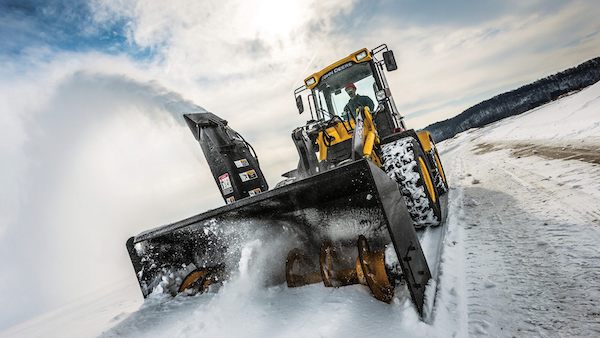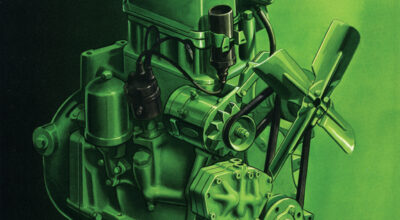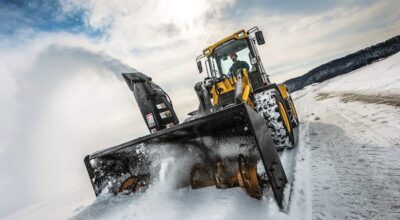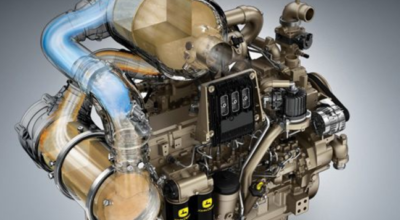For those planning to work throughout the winter months, it’s essential to learn how to start a cold diesel engine. Doing so is essential to keeping your engine in working order for seasons to come. For many, however, this can be difficult.
What Are the Consequences of Starting a Cold Diesel Engine?
Starting a cold diesel engine can have several consequences, including:
Decreased Fuel Efficiency
When you try to start a cold diesel engine, the fuel gets thick due to the freezing temperatures. This makes it difficult for the fuel to flow through the engine, so you use more fuel and get less mileage.
Increased Wear and Tear
Starting a diesel engine in cold weather is tough on the internal components. The thickened oil and fuel make it hard for the engine to lubricate properly, causing more friction and wear on important parts like pistons, cylinders, and bearings. Eventually, this can mess up the engine and force you into expensive repairs.
Increased Emissions
Increased vehicle emissions are a growing concern, and it’s important to recognize that cold diesel engines produce higher emissions levels than warm ones before operation. This is primarily because cold fuel and oil do not burn as efficiently, leading to incomplete combustion. As a result, pollutants are released into the air, contributing to air pollution and negative environmental impacts.
Increased Risk of Glow Plug Damages
Many diesel engines are equipped with glow plugs, which preheat the combustion chamber to aid in starting. Cold starting a diesel engine without allowing proper time for the glow plugs to warm up can lead to premature failure or damage to these components.
Reduced Engine Lifespan
Continuous cold starting without proper precautions can significantly shorten a diesel engine’s lifespan. The increased strain, wear, and tear associated with a cold start engine can lead to premature engine failure, resulting in costly repairs or replacement.
What Causes a Diesel Cold Start?
Diesel engines can have a hard time starting in cold weather. This happens because diesel fuel doesn’t vaporize easily in low temperatures. It needs more heat to ignite compared to gasoline. This can lead to a weak or failed start. Other things that can cause this issue are glow plug problems, fuel injector issues, or a weak battery. In really cold weather, some diesel engines may need additives or block heaters to warm up the engine before starting.
8 Tips to Start a Cold Diesel Engine in Winter
The top two reasons why individuals typically encounter difficulties with cold diesel engines are gelled fuel and electrical failure. So, before facing dropping temperatures, cold diesel engine-powered machinery must be properly maintained. With this in mind, here are six tips for starting a diesel in cold weather and maintaining your equipment over time.
1. Do Not Underestimate Warm-Up Time
Giving your cold diesel engine time to warm up is essential. Before operating, you should always allow your equipment to warm up for at least five minutes – this will allow the hydraulic oil to warm. Failing to do so can make the engine work harder than necessary.
2. Consider Heating Options
There are several options available to you when it comes to heating your machinery and keeping it running smoothly.
- An Electric Block Heater: This can heat up the coolant in-stream, which in turn can warm the engine blog and oil in the crankcase. This facilitates the turnover of the engine.
- A Diesel-Fired Coolant Heater: This heater can allow you to heat up your engine in an area where electricity may not be readily available.
- Glow Plugs: These can help you ignite cold fuel, and ether can heat the fuel-air mixture inside of a large-sized engine.
- A Battery Tender: The cranking amperage of machinery batteries tends to diminish under colder temperatures. While machinery is prone to this kind of breakdown, a battery tender will remain effective so long as it is at full charge. Before winter, owners of cold-diesel machines would be wise to monitor battery cables. Bad connections reduce a battery’s ability to start a piece of machinery.
3. Keep Your Diesel Exhaust Fluid Thawed
If you intend to add DEF to your machinery at a later time, make sure that it is kept at a temperature above 12 degrees Fahrenheit to prevent it from freezing. Freezing does not affect the uptime of your equipment, but having the DEF prepared can ensure that it’s ready to be dispensed when necessary.
4. Address Frozen Fuel
A more common barrier to the smooth starting of machinery is diesel fuel forming wax crystals during winter. This impaired fuel will clog fuel filters, and the engine will not run. One way to deter crystals from forming in the fuel is by using winter-blended diesel fuel, which reduces the temperature at which these crystals form.
Similarly, in the event that your fuel has frozen or gelled together, you’ll want to change the fuel filter and warm the fuel before you start the engine, according to the University of Tennessee Agricultural Extension Service. This will prevent the frozen fuel from blocking the flow from the tank to the injector pump.
5. Keep Your Engine in a Warm Area
If possible, store your diesel engine in a warm area where it will not be exposed to elements, such as sleet and snow. Keeping the engine in an area where the temperature is even a few degrees warmer can make it quicker to warm up.
6. Make Sure Your Fuel Tank is Full
Condensation in a fuel tank can eventually freeze and cause just as many problems as gelled fuel. Try to keep your fuel tank full to eliminate any space for condensation to build up in the cold weather. A winter diesel fuel additive can potentially reduce the risk of your fuel freezing up as well.
7. Do Not Mix Additives Into Winterized Diesel Fuel
While diesel additives can help address cold weather problems during the winter, they’re not a complete solution. These additives primarily prevent large gel particles from forming and clogging fuel filters. But still, in many cases, some gelling will occur, regardless of temperature or additives. If you choose fuel stations offering winterized diesel (distinct from blended diesel), skip additional additives. Mixing different additives can deteriorate the fuel blend, negating any potential benefits.
8. Use the Proper Diesel Fuel
Diesel fuel comes in two grades: Diesel #1D or Diesel #2D. The most common type of Diesel fuel is #2, which is less volatile than Diesel #1. A higher cetane number indicates a more readily ignitable fuel mixture. For light-duty diesel engines, manufacturers generally recommend a 40-45 cetane fuel rating. At the same time, heavy-haul truck drivers often utilize Diesel #2 for long-distance travel because of its superior fuel economy.
Starting a Cold Diesel Engine FAQs
What Makes Diesel so Difficult to Start in Cold Weather?
Unlike gasoline engines, which rely on spark plugs to ignite the fuel, diesel engines use compression to create the heat necessary for combustion. While this makes them more efficient, it also makes starting a diesel engine more difficult in cold weather. Other contributors include thicker oil, fuel gelling, glow plugs, heat loss, and battery performance.
How Do I Keep My Diesel Engine Warm in the Winter?
A few tips to help keep your diesel engine warm in the winter include keeping the fuel tank full, parking it in a garage or covered area, using an engine blanket, and performing regular maintenance.
How Cold is Too Cold for a Diesel Engine to Start?
The specific temperature at which a diesel engine becomes too cold to start depends on several factors, including engine model, fuel type, condition of the engine, as well as the use of a block heater, cold-flow improvers, and proper engine maintenance.
What Can I Put in My Diesel for Cold Weather?
To properly store and prepare your diesel for cold weather, you can use either winter-grade diesel fuel or arctic diesel fuels and mix in certain additives, including cold-flow improvers, anti-gel additives, and cetane improvers.
How Do You Keep Diesel Fuel from Freezing?
Diesel fuel can freeze when temperatures drop below its cloud point. Some ways to prevent diesel fuel from freezing include using winter-grade or arctic diesel fuels or mixing in additives, including cold-flow improvers, anti-gel additives, and cetane improvers.
Can You Push Start a Diesel from Cold?
Yes, you can push-start a diesel vehicle by turning the ignition key to “on,” putting it in gear, and having someone push from behind. Once it gets going, let go of the clutch pedal to start the engine.
What is the Best Way to Start a Diesel Engine?
Ensure the engine is in “Park” or neutral if it’s a manual. Then, turn the key or press the start button while gently pressing the accelerator. Also, don’t pump the accelerator too much because that can flood the engine.
How Do You Warm Up a Cold Engine?
Start by turning on your car and letting it idle. Don’t rev the engine or start driving immediately. Letting it idle helps the engine oil warm up and circulate, lubricating the engine parts. You can also turn the heater to a high temperature to warm up the engine faster.
Do Diesel Engines Need to Warm Up?
Yes, they do. When a diesel engine is cold, the fuel may not fully vaporize, causing incomplete combustion and more fuel usage. Warming up the engine helps it reach its best temperature, making it more fuel-efficient and reducing engine wear. Let the engine idle for a few minutes before driving to ensure it warms up properly.
Why Are Diesel Engines Slow When Cold?
Diesel is slower when cold because of something called a cold start engine. When the engine is cold, the fuel mix might not vaporize properly, leading to incomplete combustion. Also, the engine oil might be thicker when cold, increasing friction. But once the engine warms up, these issues disappear, improving performance.
If you have any questions about John Deere equipment, you can contact your local John Deere dealer.
If you enjoyed this post or want to read others, feel free to connect with us on Facebook, Pinterest, Twitter, or Instagram!




